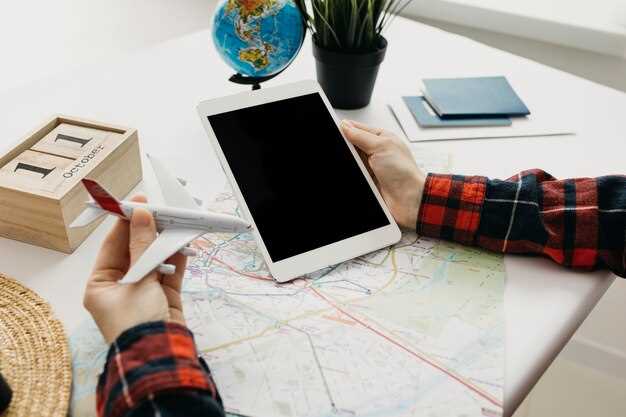
In today’s fast-paced world, reliance on GPS technology for navigation has become commonplace. However, understanding traditional navigation skills remains invaluable. By honing these skills, you can enhance your ability to navigate confidently in unfamiliar terrain without the aid of modern technology. This article explores various methods and techniques to master navigation skills, emphasizing the importance of using natural cues and maps.
One fundamental aspect of effective navigation is maintaining a strong sense of direction. Developing an awareness of your surroundings can significantly improve your ability to use various tools like compasses and maps. Using landmarks and celestial bodies can serve as crucial reference points, allowing you to orient yourself accurately and plan your route more effectively.
In addition to enhancing your observational skills, understanding map reading is essential for successful navigation. Familiarizing yourself with different types of maps, such as topographic maps, can provide valuable information about the terrain and help you make well-informed decisions. By integrating these techniques into your navigation practices, you will gain the confidence to explore new environments independently, free from the constraints of GPS.
Mastering Navigation Skills Without GPS: Tips and Techniques

Learning to navigate without GPS is a valuable skill that enhances your confidence and awareness in the outdoors. To master navigation, start by familiarizing yourself with basic maps and understanding how to read contour lines, symbols, and scales. This knowledge will allow you to interpret geographic information effectively.
A crucial technique is using a compass. Understand how to orient your map using a compass, which will help you establish your location in relation to your surroundings. Practice taking bearings and following those bearings to reach your destination. Regular practice in different environments will enhance your proficiency.
Landmarks are your friends in navigation. Identify significant terrain features such as hills, rivers, or buildings. Use them as reference points to navigate and confirm your position while on the move. Always keep an eye on your surroundings and correlate them with the map to avoid getting lost.
Keep track of your pace and distance traveled. Use counting steps or timing your travel between landmarks to estimate how far you have gone. This technique is especially useful on uneven terrain where mileage may vary.
Practice navigation techniques regularly, even in familiar areas. Create challenges for yourself by setting out without technological aids, allowing you to build confidence in your abilities. The more you use these skills, the more proficient you will become.
Finally, maintain a positive mindset. Navigation without GPS can feel daunting, but with practice and perseverance, you can master these essential skills, making every journey a rewarding experience.
Understanding Compass Directions and Their Applications
A compass is an essential tool for navigation, providing direction based on the Earth’s magnetic field. Understanding compass directions involves knowing the four primary cardinal points: North, East, South, and West. Each of these directions can further be subdivided into secondary intercardinal points, such as Northeast, Southeast, Southwest, and Northwest. Mastering these directions is crucial for effective navigation.
To use a compass effectively, first, familiarize yourself with its components, including the magnetic needle, which always points toward magnetic North. When you hold the compass level, you can determine your heading. Rotate the compass housing until the orienting arrow aligns with the magnetic needle, ensuring that you are aware of the direction you are facing.
The applications of compass directions extend beyond mere navigation. Outdoor enthusiasts, such as hikers and campers, rely on compass skills to explore unfamiliar terrain safely. By understanding how to triangulate positions using landmarks and compass readings, individuals can pinpoint their location on a map and navigate accurately.
In addition, compass directions aid in route planning. By studying topographical maps and identifying markers in the real world, one can chart a course, avoiding obstacles and finding the most efficient paths. This ability to relate compass directions to physical surroundings enhances navigation without the reliance on GPS technology.
In sum, a solid grasp of compass directions and their applications is vital for anyone looking to master navigation skills. Whether hiking, camping, or exploring new areas, the compass serves as a reliable guide, enabling users to navigate with confidence and precision.
Identifying Landmarks and Natural Navigational Aids

Mastering navigational skills without GPS requires keen observation and an understanding of the environment. Identifying landmarks and natural aids can significantly enhance your ability to navigate accurately.
Landmarks are distinct features in the landscape that can help you orient yourself. They can be man-made structures or prominent natural features. Here are some key types of landmarks and aids to consider:
- Mountain Peaks: High-elevation peaks are often visible from great distances and can serve as excellent reference points.
- Rivers and Lakes: Water bodies typically have a defined course or shape, making them reliable navigational aids.
- Trees and Forests: Notable clusters of trees or distinctive types of forests can serve as good markers on your route.
- Buildings and Structures: Unique or large buildings in urban areas can help you confirm your location.
- Roads and Trails: Familiar roads, paths, or trails can also guide you, especially if you have prior knowledge of the area.
Incorporating a compass into your navigation skills can greatly assist you in utilizing these landmarks. Here’s how to effectively use a compass in conjunction with identifiable features:
- Orient your map: Align your map with the landscape using a compass to ensure accurate navigation.
- Take bearings: Use the compass to take bearings on visible landmarks. This helps in keeping track of your direction.
- Use landmarks for verification: Periodically compare your compass readings with visible landmarks to confirm your course.
By paying close attention to your surroundings, you can effectively navigate without the reliance on GPS. The combination of identifying key landmarks and using a compass allows for a reliable and insightful exploration of your environment.
Practicing Dead Reckoning and Timing for Accurate Positioning
Dead reckoning is a fundamental navigation technique that allows navigators to estimate their current position based on a previously determined location. To effectively practice this skill, it is essential to combine accurate timing with the use of a compass.
To begin, establish a clear starting point and note the coordinates. From there, use the compass to determine your heading. Make sure to account for magnetic declination, which varies depending on your location. This will help eliminate potential errors in your directional readings. Keeping a steady course is crucial, so practice maintaining a constant heading as you move.
Timing is another critical element in dead reckoning. Accurate timekeeping allows you to calculate distance traveled over time. Establish a pace count based on your walking speed or the speed of your vehicle. For walking, a common practice is to count your steps over a set period, usually one minute. Multiply this by your estimated stride length to ascertain the distance covered.
Once you have a distance and direction, periodically recalculate your position using the compass and your time data. After a certain distance has been covered, stop to reassess your coordinates. This reevaluation ensures that any drift or error in your heading is corrected. Remember, environmental factors such as wind or terrain can affect your trajectory, making this practice a vital part of navigation without GPS.
Regularly practicing dead reckoning in various conditions–different terrains, times of day, and weather–can enhance your skills and confidence. Over time, you’ll find that you become more adept at estimating your position accurately, solely relying on your compass and timing methods.
